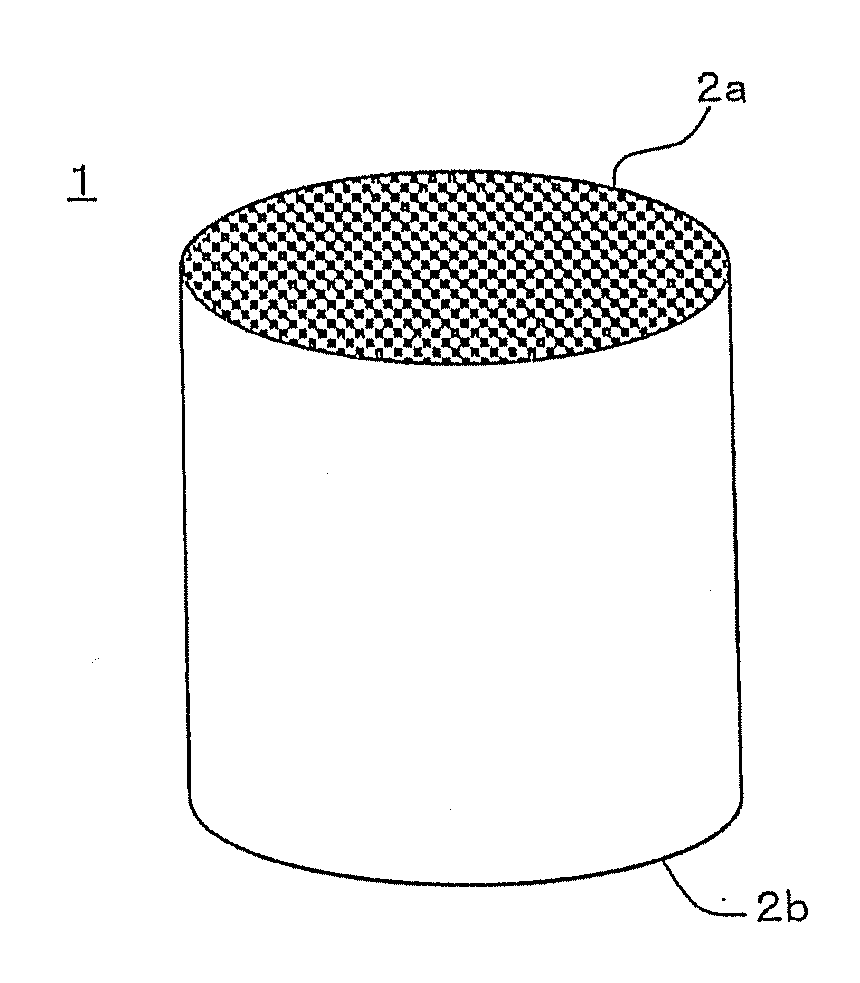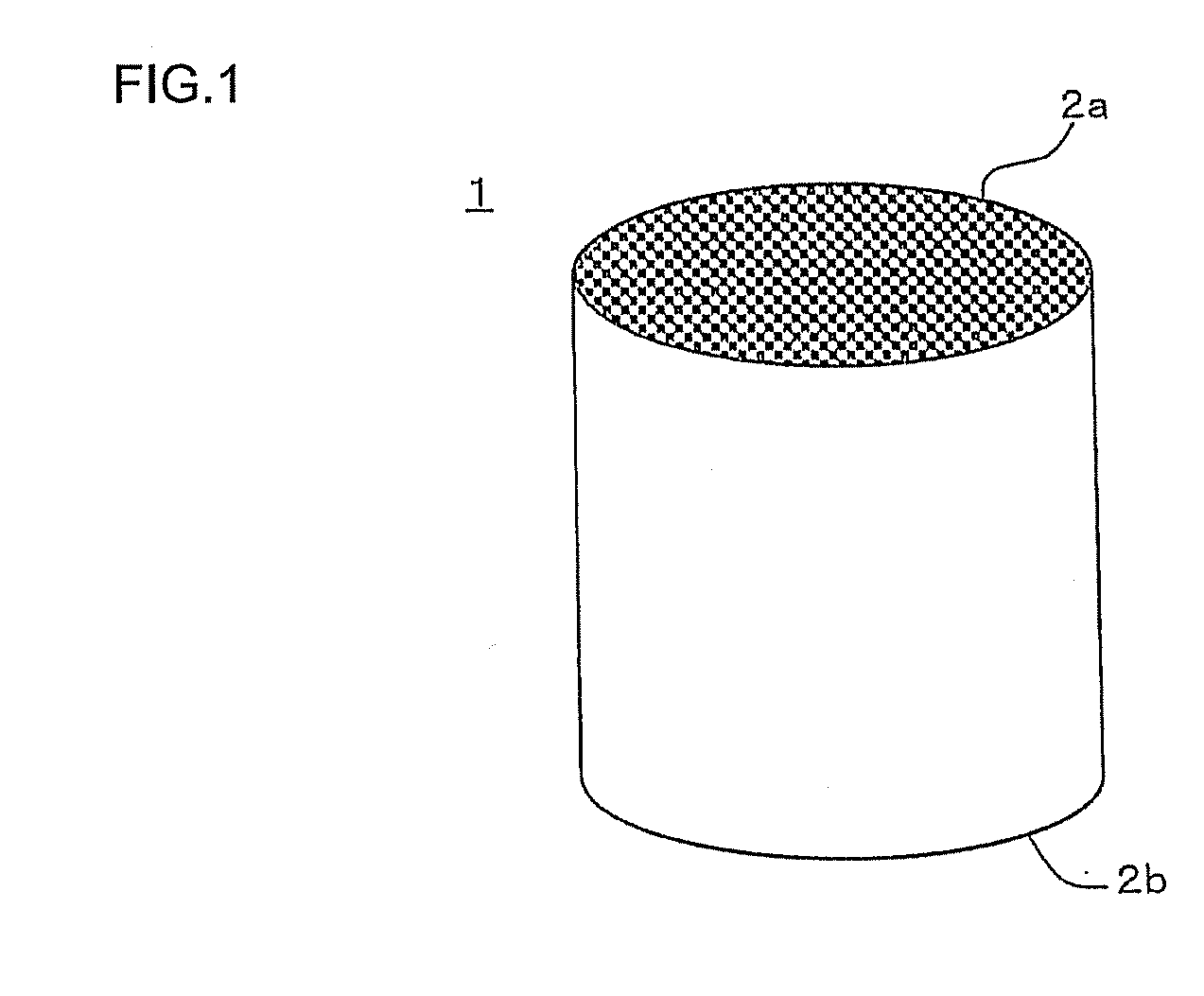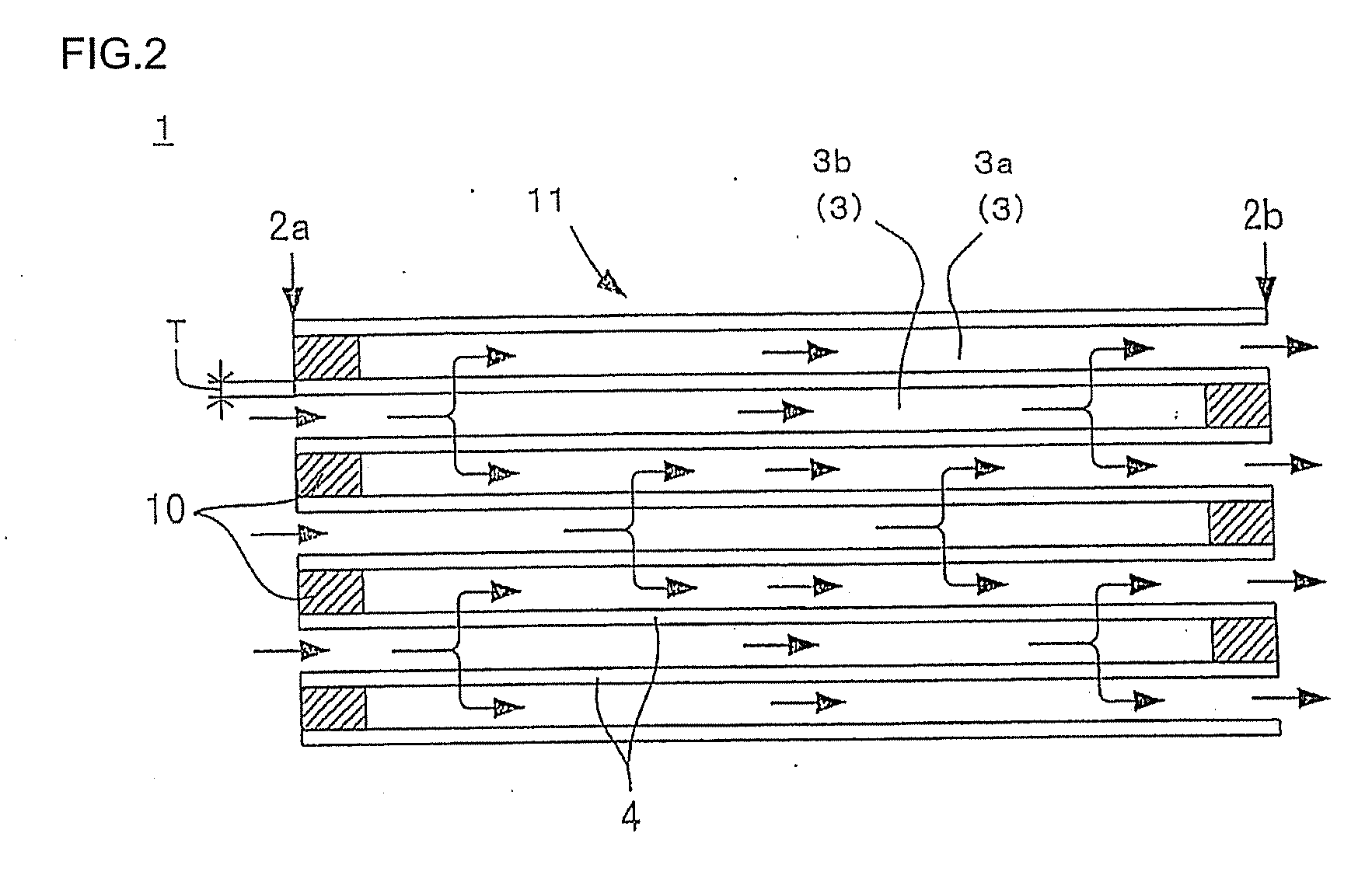Substrate with surface-collection-layer and catalyst-carrying substrate with surface-collection-layer
a catalyst-carrying substrate and surface collection technology, which is applied in the direction of catalyst carriers, physical/chemical process catalysts, separation processes, etc., can solve the problems of engine output dropping to an unacceptable level, affecting the performance of the engine, and reducing the pressure loss of the exhaust system, etc., to achieve high particulate matter collection efficiency, low pressure loss, and sufficient partition wall strength
- Summary
- Abstract
- Description
- Claims
- Application Information
AI Technical Summary
Benefits of technology
Problems solved by technology
Method used
Image
Examples
example 1
Preparation of Plugged Honeycomb Structure
[0084]Alumina, aluminum hydroxide, kaolin, talc, and silica were used as cordierite-forming raw materials. 13 parts by mass of a pore-forming material, 35 parts by mass of a dispersion medium, 6 parts by mass of an organic binder, and 0.5 parts by mass of a dispersant were added to 100 parts by mass of the cordierite-forming raw materials. The mixture was then kneaded to obtain a kneaded clay.
[0085]Water was used as the dispersion medium, coke having an average particle diameter of 10 μm was used as the pore-forming material, hydroxypropylmethyl cellulose was used as the organic binder, and ethylene glycol was used as the dispersant. The kneaded clay was extruded using a given die to obtain a cylindrical honeycomb formed body having a quadrangular cell shape.
[0086]The honeycomb formed body was then dried using a microwave dryer, completely dried using a hot-blast dryer, and cut at each end (adjusted to given dimensions) to obtain a dried hon...
example 23
[0090]First, a substrate with a surface-collection-layer was produced in the same manner as in Example 1, except for employing the conditions shown in Table 2. The resulting catalyst-carrying substrate with a surface-collection-layer was coated with a catalyst to obtain a catalyst-carrying substrate with a surface-collection-layer.
[0091]Specifically, a catalyst slurry containing platinum (Pt) (noble metal), activated alumina, and ceria (oxygen adsorption agent) was prepared. The mass ratio of platinum, activated alumina, and ceria was platinum:activated alumina:ceria=1:80:20. Then, a coating layer was formed on the inner surface and inside the pores of the partition wall of the substrate with a surface-collection-layer by a suction method using the above obtained catalyst slurry. The coating layer was formed by immersing the outlet-side end of the substrate with a surface-collection-layer in the catalyst slurry, and sucking the catalyst slurry through the inlet-side end (i.e., the c...
PUM
| Property | Measurement | Unit |
|---|---|---|
| Fraction | aaaaa | aaaaa |
| Fraction | aaaaa | aaaaa |
| Fraction | aaaaa | aaaaa |
Abstract
Description
Claims
Application Information
 Login to View More
Login to View More - R&D
- Intellectual Property
- Life Sciences
- Materials
- Tech Scout
- Unparalleled Data Quality
- Higher Quality Content
- 60% Fewer Hallucinations
Browse by: Latest US Patents, China's latest patents, Technical Efficacy Thesaurus, Application Domain, Technology Topic, Popular Technical Reports.
© 2025 PatSnap. All rights reserved.Legal|Privacy policy|Modern Slavery Act Transparency Statement|Sitemap|About US| Contact US: help@patsnap.com



